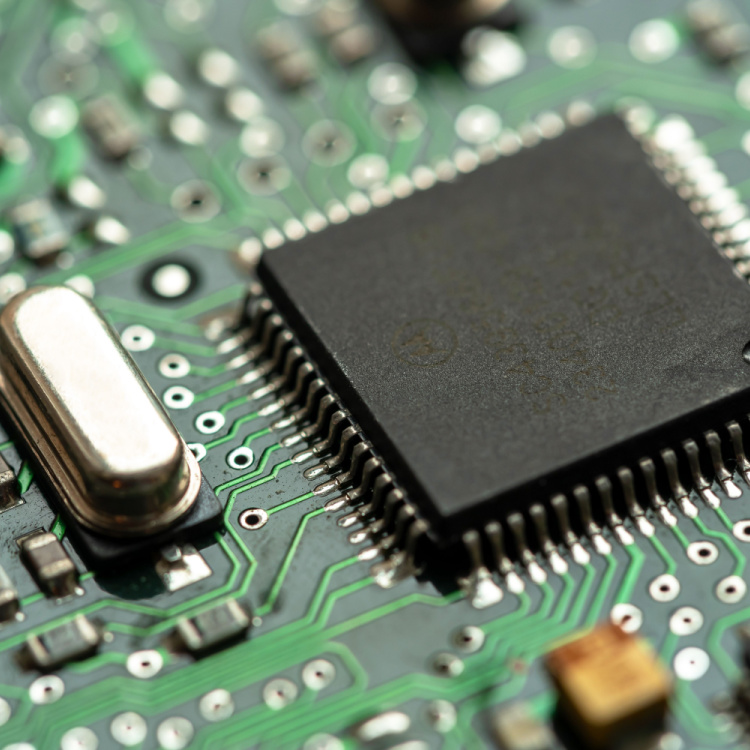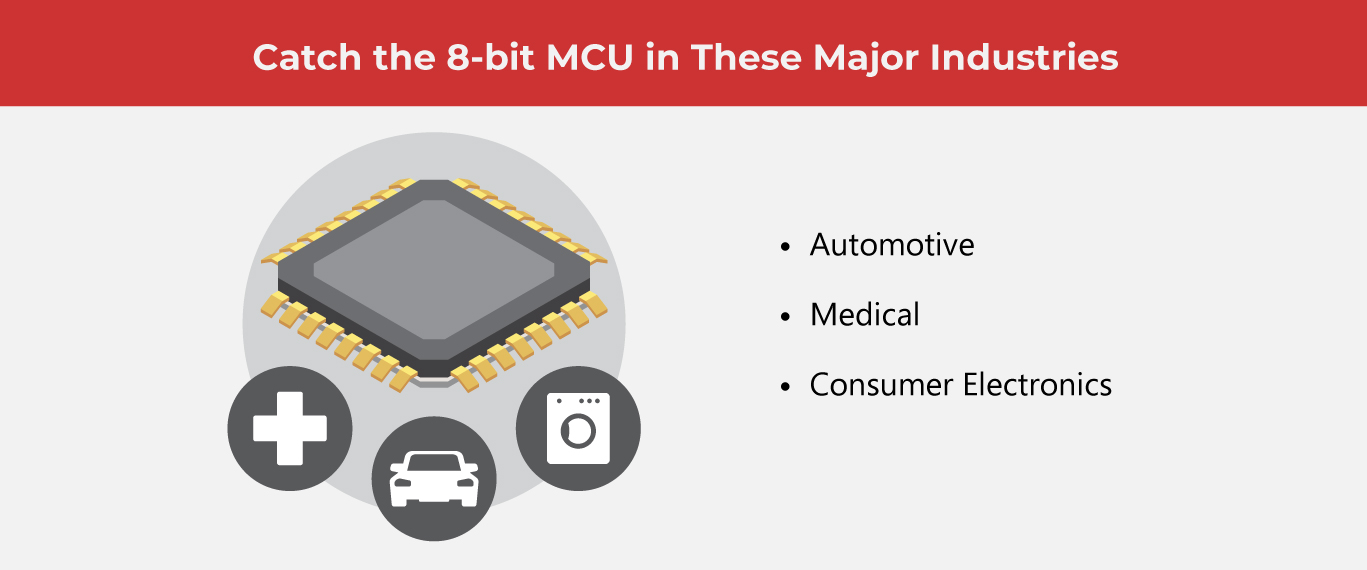The Marvel of the 8-Bit MCU

8-bit chips are coming back in a major way, and they’re not just for retro-looking video games anymore. These electronic wonders are continuing to show how they’re powering up big industries in the years to come.
Considered to be the backbone of modern computing, 8-bit chips have been around for half a century. Without 8-bit microprocessor units (MCUs), many of our electronic devices wouldn’t exist. Its introduction to the world signaled the great computer shift from mainframes and to the new era of smaller, more portable systems.
Since its introduction in the 1970s, microprocessors have become more advanced, more powerful, and able to hold larger capacities for data processing. Bits quickly became bytes, and fifty years forward, the whole world now uses machines that can process petabytes.
The more sophisticated technology got, it seemed the modest 8-bit chip faded further and further into the background, only to be noticed by computer hobbyists.
That’s all about to change.

(Also read: It’s Medtech’s Time to Shine)
Two EMS manufacturers have recently released an e-book discussing the powerful potential of the 8-bit MCU. With modern applications, experts enumerated how various 8-bit MCUs such as PIC and AVR MCUs can bring tremendous improvements to fields such as automotive, industrial, medical, and consumer electronics.
Its size and capacity may be small, but experts see that these same qualities become advantages rather than disadvantages. Limitations are now becoming possibilities.
Because of how compact the 8-bit MCU is, engineers and designers see the potential for more streamlined and modular solutions. Considering how the modern world is obsessed with using smaller, sleeker devices, optimization is valued more than ever. Designers are cutting the clutter and trimming the fat in most modern gadgets without sacrificing the power of these devices.
8-bit in Automotive
According to Zechariah Peterson, a design expert and electronics design consultant, “Automobiles are like data centers on wheels.” Each part of the vehicle captures and processes small packets of data continuously. He says that 8-bit MCUs are useful because data capture capability is distributed around the vehicle instead of being centralized in one system.
8-bit MCUs could help in reducing costs and component size. The simplicity of an 8-bit MCU also contributes to efficiency, keeping the vehicle design compact, and overheads low.
Industrial 8-bit
Modern offices, factories, buildings, and other similar structures rely on stable systems that allow businesses to run smoothly. Ventilation, cooling, air conditioning, and energy systems make up the industrial components of business headquarters. Today, these systems are highly automated and controlled by networks that communicate with each other to run smoothly.
Most systems rely on sensor modes for communication. As a system becomes more complex, multiple sensor nodes are needed. 8-bit MCUs can address industrial requirements more efficiently because these consume less power. These are also able to withstand harsher environments.
Engineer Priyanka Yussuf says that 8-bit MCUs provide longer battery life and have a better balance of peripheral features than higher-bit devices. “The key design requirements to consider when selecting microcontrollers for industrial applications are speed, complexity, peripherals, and flash memory.”
8-bit in Medical
IoMT (Internet of Medical Things) is a highly specialized area of IoT technology directly dealing with medical equipment. It’s also a rapidly widening intersection of both medical and technological fields.
Wearables fall under IoMT. After the pandemic, patients’ attitudes towards getting diagnosed have shifted out of the hospital and into more lifestyle-specific, lifestyle-integrated, more customized, and more personalized ways.
Patients are more empowered to have more agency over their vitals; monitoring the number of steps taken daily, their blood pressure, their blood sugar levels, and others. Today, smartwatches and wearable medical monitors make keeping track of vitals a lot more portable.
8-bit MCUs are now being explored to enhance IoMT. Engineers are looking into how 8-bit MCUs can be used in wireless devices for monitoring and communicating with other medical devices. They are also interested in exploring its use for peripherals, since it maintains low power without sacrificing performance.
As more and more of our everyday appliances and vehicles become smart and use some form of IoT technology, the greater the need for computing and network systems that communicate with each other to work seamlessly. Experts are now seeing a way forward by unleashing the potential of the past.
8-bit in Consumer Electronics
Many of our modern appliances such as our televisions, microwaves, refrigerators, and coffee makers rely on MCUs to function. As our demand for these appliances to have smarter features, their reliance on MCUs grows greater. 8-bit MCUs offer a solution to enhancing smarter features in our electronic devices while keeping costs low and affordable.
Manufacturers can scale production while keeping costs low with 8-bit MCUs. 8-bit MCUs such as PIC and AVR MCUs enable longer battery life and efficiency for our electronics. We want our electronics to be energy-efficient and have batteries that last long on a single charge. 8-bit MCUs can address those concerns. They can also support other plug-ins for various devices.
The bottom line that strengthens the case for 8-bit MCUs in consumer electronics is that they allow for simpler designs that consume less power, and also make the device itself more affordable. That’s always a winning combination.
As one of the Top 20 EMS companies in the world, IMI has over 40 years of experience in providing electronics manufacturing and technology solutions.
We are ready to support your business on a global scale.
Our proven technical expertise, worldwide reach, and vast experience in high-growth and emerging markets make us the ideal global manufacturing solutions partner.
Let's work together to build our future today.
Other Blog




